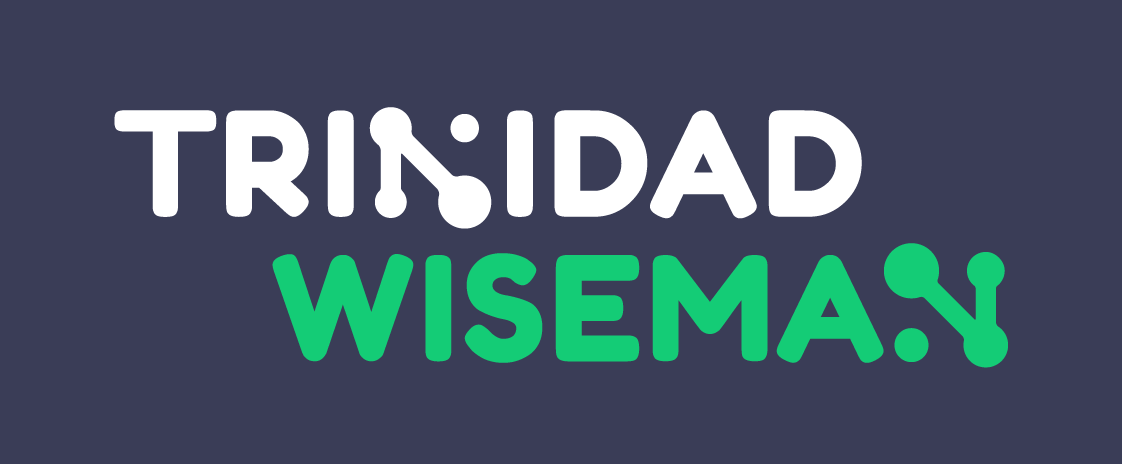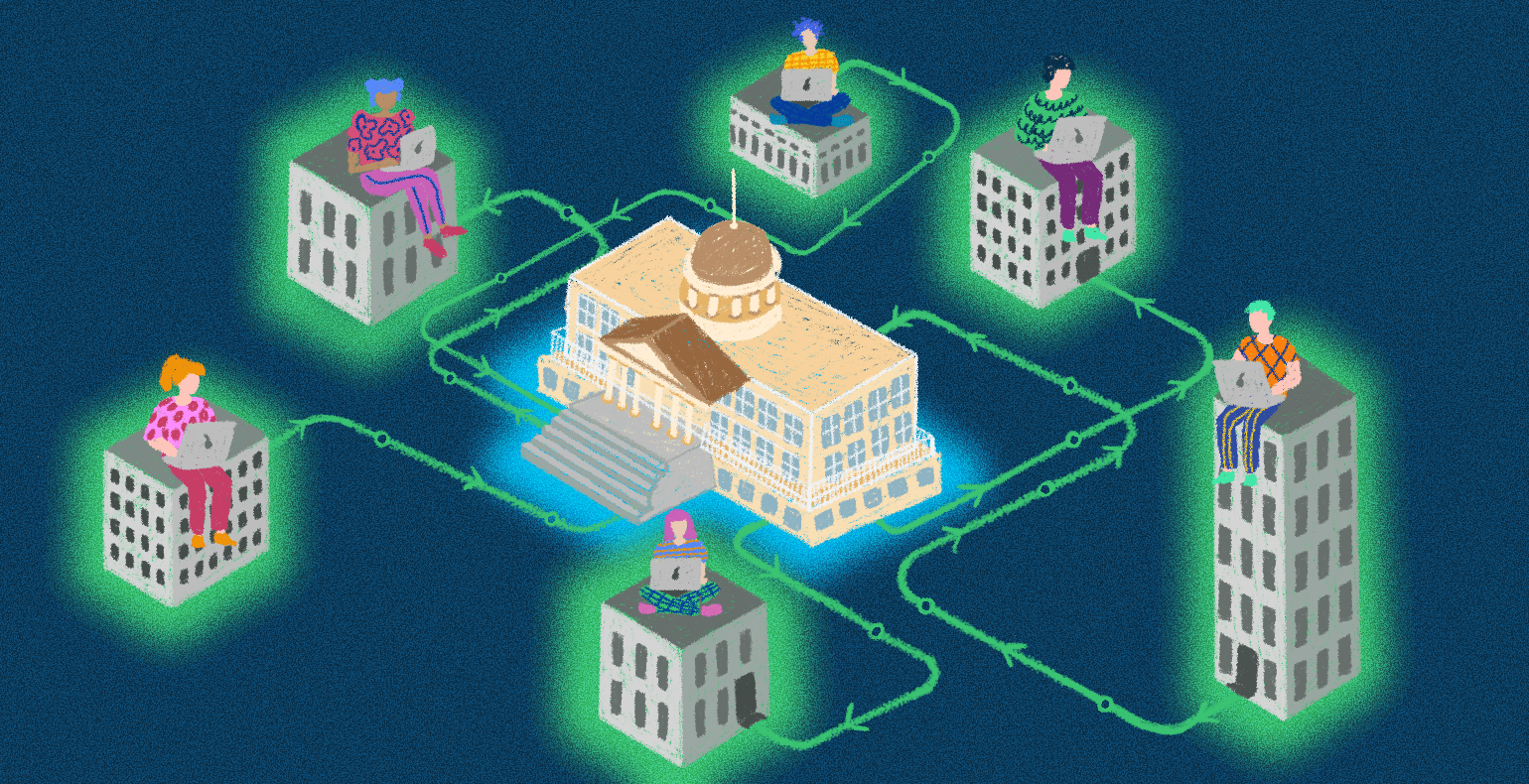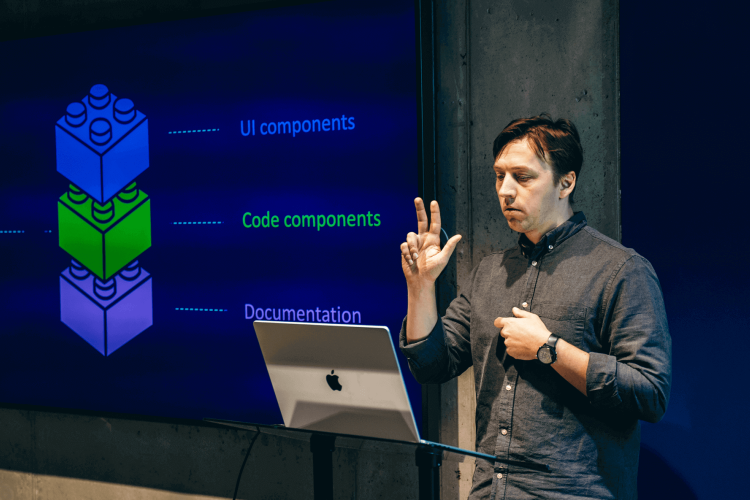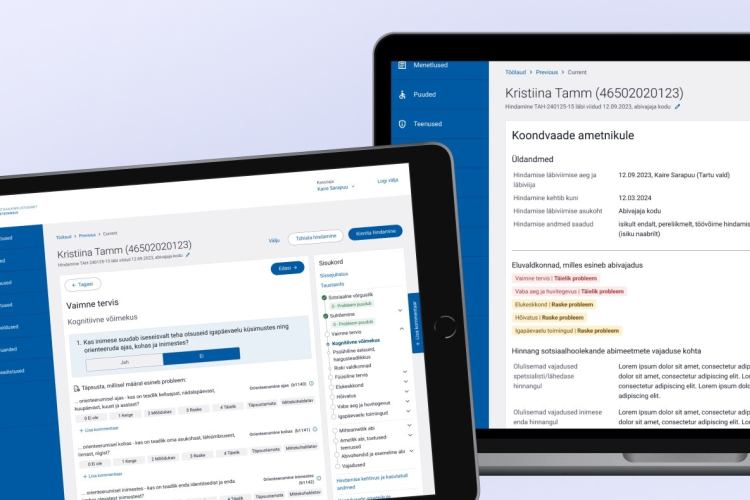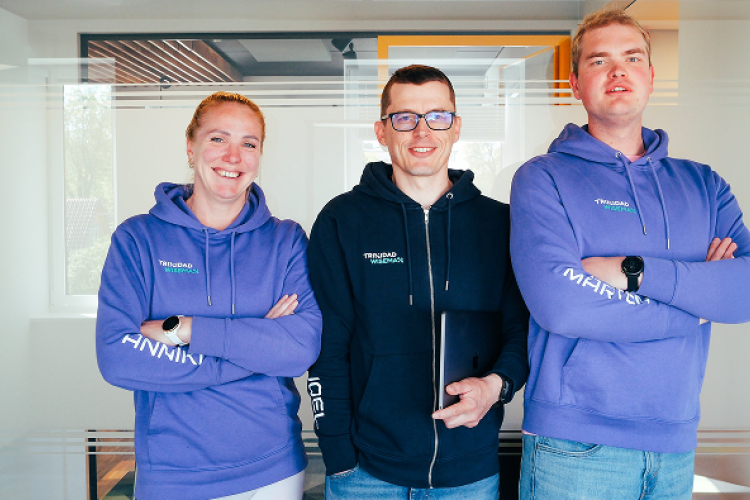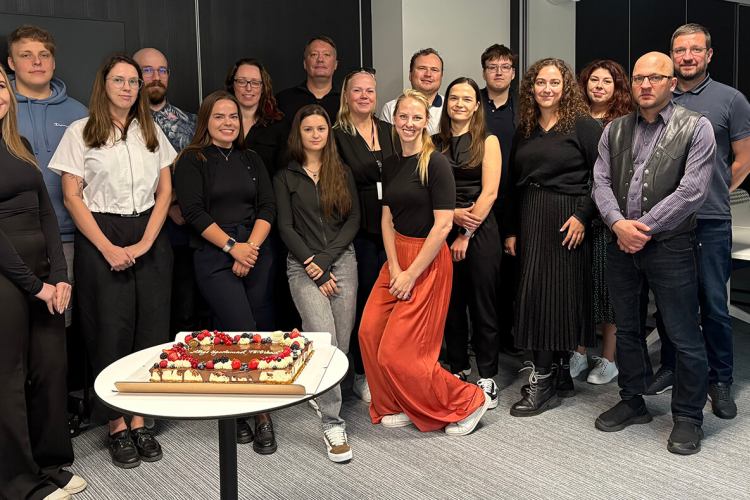The new functionalities of the Information System of the Labour Inspectorate make it easier for employers to communicate with the state
The Labour Inspectorate is a government agency that strives towards creating a good work environment for every Estonian employee. Since 2019, Trinidad Wiseman has been a development partner for the Information System of the Labour Inspectorate (TEIS) which plays a crucial role in achieving that goal.
During that time, we have developed various important services that facilitate employers’ communication with the Labour Inspectorate and decrease the administrative burden on companies. The self-service of the Labour Inspectorate is a good example of a national information system that is highly valued by both the customer and the end users.
In this post, we will talk more about which processes we have digitalised using TEIS and how that has simplified the everyday lives of the Labour Inspectorate and employers.
If you wish to implement development projects that would help your organisation achieve its goals, then we can help you. Read more about our approach towards software development on our website and get in touch with us.
Digitalisation decreases administrative burdens
The main goal of the self-service of the Labour Inspectorate is to support employers in creating a good work environment. TEIS facilitates the communication between the Labour Inspectorate and employers and decreases the administrative burden on companies as it enables them to submit information and perform actions in a quick, convenient and paperless way.
The self-service also allows to map and submit any necessary information regarding employees and their work environment, to plan different risk management activities for work environments, and to communicate with a labour inspector during a supervision procedure. Employees can use TEIS to also see information about themselves and their company.
A digital tool in the self-service environment can be used to conduct and updated risk analyses for companies. The risk analysis tool presents various risk factors and provides advice on how to avoid or decrease specific risks, starting with general work environment problems and ending with field-specific risks. When mapping risks, you must evaluate whether the described risk is present in the organisation or not. If yes, then the tool will display precautions that can be taken to avoid or decrease that risk. Only representatives of the organisation and its employees can see an organisation’s risk analysis, no one else can access that information. The risk analysis module makes it easier and cheaper to evaluate a work environment, especially for microenterprises and small enterprises who have smaller financial resources to order a risk analysis from a service provider. 37 839 companies have already uploaded their risk analyses on the self-service portal. Bigger companies, who have conducted risk analyses before, have simply uploaded it into the portal and smaller ones have conducted theirs using the tool. Altogether, about 72% of companies have submitted the internal risk analysis. In other words, we can say that thanks to this solution, companies have saved around 19 million euros, considering that the average market price for one risk analysis is around 500 euros.
TEIS is comprised of two parts: the officials’ service used by the officials of the Labour Inspectorate, and the self-service used by employers and employees. Both applications are still in development and new functionalities and interfaces with various systems are constantly being added. Additionally, TEIS also includes an open data application that can be used to find information about issued precepts and announcements regarding dispatched employees.
In cooperation with the Labour Inspectorate, TEHIK and TripleDev, Trinidad Wiseman has been working on developing TEIS for seven years already. On average, two new self-service modules have been completed each year and we will take a closer look at the more important ones next.

The new functionalities of the self-service portal:
The occupational accidents module
At the end of 2022, the occupational accidents and diseases registration module was completed, which provides companies a convenient paperless option to notify the Labour Inspectorate of any occupational accidents, to participate in any studies done on occupational accidents and diseases, and to participate in the Labour Inspectorate’s supervision.The victim has the option of acquainting themselves with the material on their occupational accident within TEIS and to communicate with a labour inspector via a chat window to provide or get information about the details of their occupational accident.
The Labour Inspectorate employees can use the internal conversation functionality to exchange information regarding every registered case (e.g. to discuss the necessity of an investigation conducted by the Labour Inspectorate). The occupational accidents module is interfaced with the Tax and Customs Board’s employment register AKA TÖR, which is used to automatically display an employee’s data. Additionally, the module exchanges data with the Health Insurance Fund. Currently, interfaces for digitally transmitting notifications about occupational accidents are being developed. These would significantly help decrease the workload for healthcare service providers.
The registration module for the employment of minors and dispatched employees
In the spring and summer of 2023, the self-service was updated with the services for registering the employment of minors and dispatched employees.
Employers can submit additional information that the Labour Inspectorate checks for about the employment of minors. Employers are also sent a notification along with instructions on the rules they must adhere to when employing minors.
The goal of the minors’ module was to make it easier, more convenient and transparent to register the employment of 7-12-year-olds and to submit any relevant data connected to that. The employer does not need to apply for the consent of the Labour Inspectorate to employ anyone under the age of 13, but they are obligated to make an entry ten working days before a 7-12-year-old starts working in the employment register and to submit related data in the Labour Inspectorate’s self-service portal. The self-service also provides the employer the option of directly communicating with the labour inspector responsible for processing the registration via a chat window.
The dispatched employees module enables both the foreign company as well as the Estonian company receiving the employee to register all foreign employees who will start working in Estonia.
Before, all employees who were dispatched to Estonia had to be registered by filling out a registration form that could be found on the Labour Inspectorate’s website and then sending it to the Labour Inspectorate via e-mail. Now, submitting the form is much easier and more user-friendly thanks to the Labour Inspectorate’s self-service portal. Additionally, the dispatched employee’s employer has a clearer overview of any notifications that have been submitted regarding the dispatch and, if necessary, it is easier to change and update any data.
The Pay Mirror
The self-service’s Pay Mirror application, which was completed in 2024, provides an overview of the state of gender equality within an organisation, enabling the observation of gender pay gaps, average and median salaries, but also the gender composition of the employees in a company and their division between different positions.
The Pay Mirror metrics are calculated by Statistics Estonia. Data processing is done when an employer makes a query – if the employer does not use the Pay Mirror, then the metrics are not calculated. The metrics shown in the Pay Mirror are not saved or stored. Only the employer and any people they have authorised can access the metrics.
Only aggregated metrics are sent to the Labour Inspectorate’s self-service portal while the Pay Mirror is being used – after the authorised person leaves the page, the metrics are not saved and Statistics Estonia runs the data processing all over again every time the Pay Mirror is opened.
The healthcare service providers’ module
As of autumn 2024, employers can use the self-service portal to give healthcare service providers (HSPs) access to any of their company’s data that is necessary for conducting the medical examination of employees or for analysing the company’s occupational health situation.
HSPs can also use the self-service to provide suggestions for improving the company’s work environment, which the employer can then add to their action plan. Protection of personal data is thoroughly guaranteed – the occupational health doctor can only see the employees’ data if they have been given the appropriate access.
The new solution makes it easier and faster to organise occupational healthcare services and decreases the amount of paperwork and time-consuming email exchanges involved. Employers and HSPs can get the data they need quickly and conveniently, which helps improve the safety of the work environment and employees’ health.
Automated notifications
As of autumn 2024, automated notifications from the self-service portal remind employers about important tasks and obligations they need to do related to their work environment. The goal of the automated notifications is to make activities related to work environments easier and more efficient to do, thus decreasing the risk of forgetting or delaying them.
Automated notifications remind employers about things like assigning representatives for their work environments and managing their authorisations, submitting and updating risk analyses, and fulfilling the tasks added to their action plan and adhering to their deadlines.
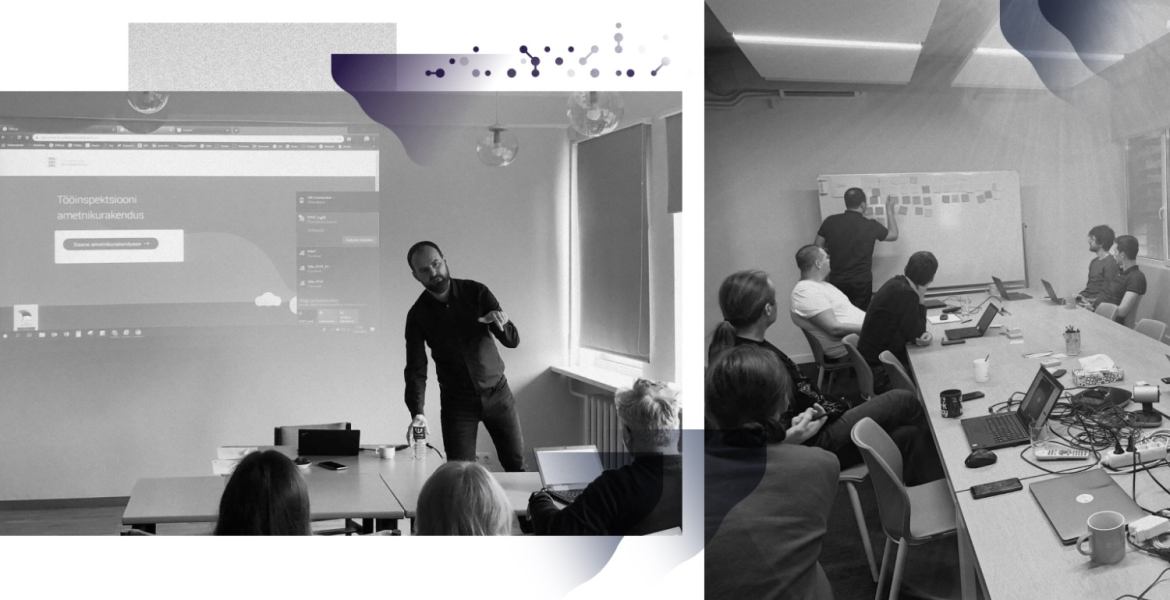
Collaborative agile development across multiple organisations
The active team of the TEIS project includes more than 25 people from various organisations. The customer is the Labour Inspectorate and the tenderer is the Health and Welfare Information Systems Centre (TEHIK). TEHIK is the country’s ICT competence centre in the fields of health, social security and labour, providing technical support and managing infrastructures.
In this project, we follow the principles of agile development. Several times a year, together with the customer, we establish the goals of the development and the roadmap for the next period, which we then use to start working. Since our goal is always to create the best possible service for the end user, then depending on the functionality being developed, that has sometimes meant needing to be flexible about the deadlines if it becomes clear that it is reasonable to do additional development works to achieve a better result.
An important part of the development process is design, which helps us get to the best solution and avoid having to do costly revisions in the later stages. The TEIS project also includes a UI/UX designer in the development of every functionality who is responsible for conducting user observations and interviews before we start work on developing the functionality. Cooperation with the end users is extremely important when digitalising and redesigning processes to ensure that the solution actually meets their needs.
The key to success is a united team
TEIS is a system that is highly valued by both the customer and the end users. The reason for that is simple: we have managed to “glue” together people from different organisations into one team with a single goal in common – to make better e-services for the Estonian people.
Another success factor is definitely the customer’s active participation and thinking along with the development process. It is impossible to provide the complete input within the procurement documentation, making it necessary to clarify things on a continuous basis. In these cases, the Product Owner on the customer’s side is responsible for getting the necessary information from their colleagues so that the team could quickly move forward with their tasks.
During the whole project, we have also experienced the customer’s trust towards the development partner and their openness to suggestions on how to technically implement one thing or another.
Working as a united team towards a unified goal requires thought-out communication. Everyone needs to understand which service they are developing and for whom, and what their role is in the development process. Communication has to be constant and the system well-documented in case people change in the project.
Conclusion
The Information System of the Labour Inspectorate is a good example of how it is possible to make daily processes easier, faster and more convenient for a very large target group using an IT system. In cooperation with the Labour Inspectorate and TEHIK, we will continue to develop TEIS to add new functionalities that will facilitate the communication between the state and employers and help employers to create good work environments.
Trinidad Wiseman has over 15 years of experience in designing and developing IT systems. If you wish to discuss digitalisation options within your organisation, then get in touch with us – we will gladly help you.
